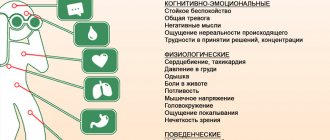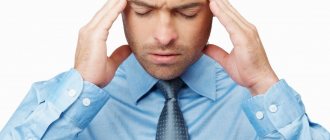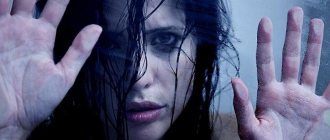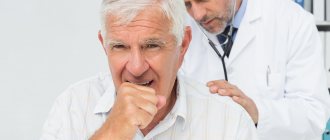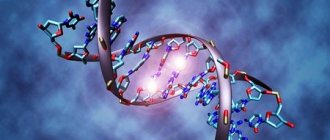How to cope with stress, Smart stress, anxiety Irina Vasilyeva In society, people with increased anxiety are usually treated somewhat frivolously. Support from their friendly community involves patting them on the shoulder and saying, “Don’t sweat it! All is good!". Probably, in a world of non-anxious people, this method could be very effective. But in our world it is completely useless, and sometimes even harmful. To really help, it is necessary to understand the reasons why increased anxiety occurs in adults and, of course, act on them first. And today I’ll tell you how to do this.
Good afternoon, dear reader! As you understand, increased levels of anxiety do not just arise. Its appearance is preceded either by special circumstances, the repetition of which is extremely undesirable for a person, or by individual characteristics (personal characteristics, physiological processes, abilities and inclinations).
According to scientific research, increased anxiety is more common in women than in men. If we talk about age characteristics, a teenager is more prone to high anxiety than a child of primary school, preschool or early age.
Anxiety does not always need to be perceived as a negative sign. In an effort to get rid of it, you may miss out on some of its beneficial properties.
Etiology
Anxious personality disorder can be caused by both external and internal etiological factors. Only a doctor can determine exactly what exactly caused the development of such a pathological process after conducting a diagnosis and collecting a personal/family history.
Generalized anxiety disorder may be caused by the following factors:
- mental and physical fatigue;
- chronic fatigue syndrome;
- severe stress, emotional shock;
- frequent nervous experiences, constant moral tension;
- long-term serious illness;
- the presence of similar disorders in the family history;
- previous psychological disorders, psychiatric diseases;
- personal problems - loss of a job, problems in the family, difficult financial situation and everything that can lead a person to depression, a state of hopelessness;
- uncontrolled use of antidepressants, tranquilizers, antipsychotics and similar drugs;
- retirement age;
- women during menopause and men during a “midlife crisis”;
- low level of intelligence;
- immoral lifestyle;
- consumption of alcohol and drugs.
In general, it should be noted that these are not all the factors that can trigger an anxiety disorder. A similar condition in a person can be caused by the slightest, at first glance, shock. In other words, the etiological picture here is not only general, but also individual in nature. Regardless of what caused the development of the disease, anxious personality disorder should be treated comprehensively and as early as possible.
General information
Feelings of anxiety and restlessness are negatively colored conditioned emotions that express a state of uncertainty, helplessness and anticipation of negative events, possible, imaginary or real, caused by an internal, difficult-to-overcome premonition of the negative.
The causes of increased anxiety, excitement, and worry are quite difficult to determine, in contrast to the feeling of fear, where the object is clearly expressed and conscious, but this is a more constant emotional experience. The common feature of both of these feelings is their fundamental factor - anxiety and negative emotional coloring.
Anxiety, as a protective reaction of the body, helps prevent potentially dangerous behavior and can motivate actions that are highly likely to ensure a successful outcome of events. Most often, the development of anxiety and restlessness is associated with the subconscious mobilization of the psyche in order to overcome potentially dangerous situations. Thus, anxiety can be considered an adaptive function that allows you to warn about external or internal danger, to prompt a person that it is necessary to take measures to escape from trouble or mitigate its consequences. Most often, such measures are unconscious, but they can also be conscious, for example, expressed in the form of diligent preparation for an exam.
Classification
The collective complex includes the following types of anxiety disorders:
- social anxiety disorder;
- anxiety-phobic disorder;
- anxiety-neurotic disorder;
- anxiety-depressive disorder;
- anxiety-depressive disorder with panic attacks;
- organic anxiety disorder.
There is also a mixed form, which includes symptoms of several types of pathology. In this case, the person is said to have generalized anxiety disorder.
In children
Anxiety that develops in children is called basal and is expressed in the form of isolation and helplessness in front of the outside world and other people. It is usually caused by the child’s need for a sense of security and develops as a result of disrupted relationships with parents or other adult relatives who do not understand that the child is a separate, integral person in need of freedom and security. As a result, the child is unable to become attached, behaves aggressively, is prone to loneliness and often withdraws into himself.
Anxiety occurs in response to a lack of basic self-confidence and is most often caused by neurotic conditions or genetic predisposition.
Symptoms
The clinical picture of such diseases includes not only psychiatric symptoms, but also physical disorders. It should also be noted that the signs of an anxiety disorder will depend on the form of the disease itself.
Common symptoms include:
- sudden mood swings;
- the appearance in the patient’s character of qualities that were previously unusual for him;
- decreased performance, general deterioration of well-being;
- sleep cycle disturbance – the patient is often bothered by attacks of insomnia.
Generalized anxiety disorder has the following symptoms:
- causeless attacks of anxiety, fear, feeling of something otherworldly;
- fear of the dark;
- psychomotor agitation – causeless motor activity, speech agitation, hyperactivity;
- tendency to thoughts of suicide, and in some cases even attempts to commit it;
- apathetic mood;
- selfishness, irritability.
Physiologically, there are symptoms such as:
- headache for no apparent reason;
- cardiopalmus;
- increased, less often low, blood pressure;
- dizziness;
- fainting state;
- nausea and vomiting - vomiting does not always occur;
- increased sweating;
- intermittent breathing, feeling of suffocation;
- chills, which is accompanied by trembling of the arms and legs;
- visual and auditory hallucinations;
- the patient either feels hot or shudders from an imaginary feeling of cold;
- loss of sensation in the arms and legs;
- chest pain, which may resemble heart pain in symptoms.
Social anxiety disorder may be accompanied by the following clinical signs:
- feeling of anxiety when being in society, even if they are familiar people;
- a person tends to stay in the house most of the time; going out even to the store can be very difficult for him;
- in places where there are large crowds of people, the patient feels awkward, the state can reach panic and even hysteria.
Anxiety-phobic disorder can manifest itself as follows:
- fear of the dark;
- fear of being alone in the house even during daylight hours;
- the phobia can extend to anything - from a closed room to some interior items;
- an attack of panic when being in circumstances that provoke a phobia (for example, if a person is afraid of a closed door, then while in such a room he may begin to panic, and loss of consciousness is not excluded).
It should be noted that symptoms quite often in the initial stages of the development of the disease can occur in a latent form. For example, some symptoms may bother the patient only after overwork, nervous tension, or poor sleep. However, over time, the clinical picture will definitely only worsen, and any neurotic disorder can develop into a serious psychiatric illness.
Main symptoms of generalized anxiety disorder
Cons of high anxiety levels
Negative negative emotions accompany almost all events that occur in a person’s life. Be it the notorious meeting with friends or speaking at a meeting.
A person may worry about the most insignificant things: uncertainty in his own opinion, knowledge, doubts about the adequacy of his appearance to the existing situation, fears and phobias.
Trying to somehow calm himself down, an individual may unconsciously resort to obsessive actions (monotonously rocking on a chair, tapping his fingers on the surface of the table, scratching various parts of the body).
A state of anxiety can also be accompanied by a variety of obsessive thoughts that reduce productivity and performance.
A person spends too much time controlling himself and the world around him, so he has no energy left for new interesting projects, travel, and acquaintances.
Diagnostics
To make a diagnosis, standard tests are used and the clinical picture is assessed.
The assessment of the clinical picture is based on the following factors:
- Presence of alarming clinical signs.
- The duration of symptoms and the conditions under which they occur, time of day.
- Primary or secondary clinical signs. If there is a suspicion that this is a secondary clinic, then an additional laboratory-instrumental diagnosis is carried out.
As for the tests, the following is carried out:
- Zung scale - used to determine the presence of depression;
- Luscher color test;
- Hamilton scale;
- Montgomery–Asberg scale.
Standard laboratory tests are not performed as they have no diagnostic value.
Symptoms
Somatic manifestations of anxiety can be expressed by various types of pain and suffocation , motor restlessness, and increased blood pressure . In general, they represent a whole multisystem syndrome, including vestibular disorders, thermoregulatory, respiratory, gastrointestinal and cardiovascular disorders. Patients complain of palpitations, lack of air, sudden faintness or pre-stroke-like state, dizziness, paresthesia , chills , muscle tension, tremor , convulsions , headache .
Symptoms of anxiety
Important! A separate manifestation of internal restlessness is akatasia, which is characterized by a constant or periodic unpleasant feeling and a desire to move or change position. Such people are called restless, as they are unable to sit for a long time or remain immobile in one position. The condition is usually caused by antipsychotics, antidepressants , psychostimulants , opiate, alcohol, benzodiazepine or barbiturate withdrawal syndrome , and in rare cases, Parkinson's disease .
Increased anxiety and feelings of restlessness, in addition to physiological reactions, affect a person’s actions and behavior:
- people experience a more acute fear of failure and become extremely sensitive to failures, productivity decreases and in order to increase it, information about success is needed, even fictitious;
- Often there is anxiety over trifles, impatience, irritability, tension, stiffness, confusion, nervousness, constantly bordering on breakdown, difficulty in wanting to relax or concentrate, memory impairment.
Treatment
As a rule, treatment is based on medication and psychocorrection sessions.
As for medications, the doctor may prescribe the following:
- sedatives;
- tranquilizers;
- neuroleptics;
- beta blockers.
Quite often, doctors prescribe Atarax for anxiety disorders.
Physiotherapeutic procedures are also additionally prescribed:
- electroconvulsive treatment;
- massage;
- manual therapy sessions;
- electrosleep.
Electroson
General recommendations include:
- proper nutrition;
- eliminating bad habits;
- normalization of the daily routine.
Folk remedies and homeopathy are no exception, however, they should be used only as prescribed by a doctor or after consultation with him, especially for homeopathic medicines.
In general, you need to understand that treatment for generalized anxiety disorder requires only comprehensive treatment, so you should follow all the doctor’s recommendations and complete the course of therapeutic measures in full.
Anxiety disorder can be cured if you follow all the recommendations of specialists and lead a healthy lifestyle. It is also important at what stage the therapeutic measures were started.
The prognosis is purely individual, but in most cases it is positive.
Causes of feelings of anxiety and restlessness
Usually the reasons for constant feelings of anxiety are unconscious and cannot be explained logically. Unlike fear, they arise long before the onset of danger, that is, they are projected into the future. Anxiety and restlessness are associated with general excitation of the nervous system, or more precisely, its sympathetic component; they may be a consequence of a person’s ability to respond sensitively, but in the end this allows them to better adapt to the requirements and norms of society.
The main causes of a highly anxious state and restlessness in a person:
- genetic predisposition;
- frequent stress or mental trauma;
- depression;
- schizophrenia;
- organic disorders;
- fear of possible failure and the unknown;
- possible danger to physical health;
- anticipation of an important event - an exam, wedding, interview, etc.;
- menopause;
- risk of loss of self-esteem or authority;
- taking alcohol, drugs, certain medications, for example, restlessness or akathisia caused by antipsychotics .
